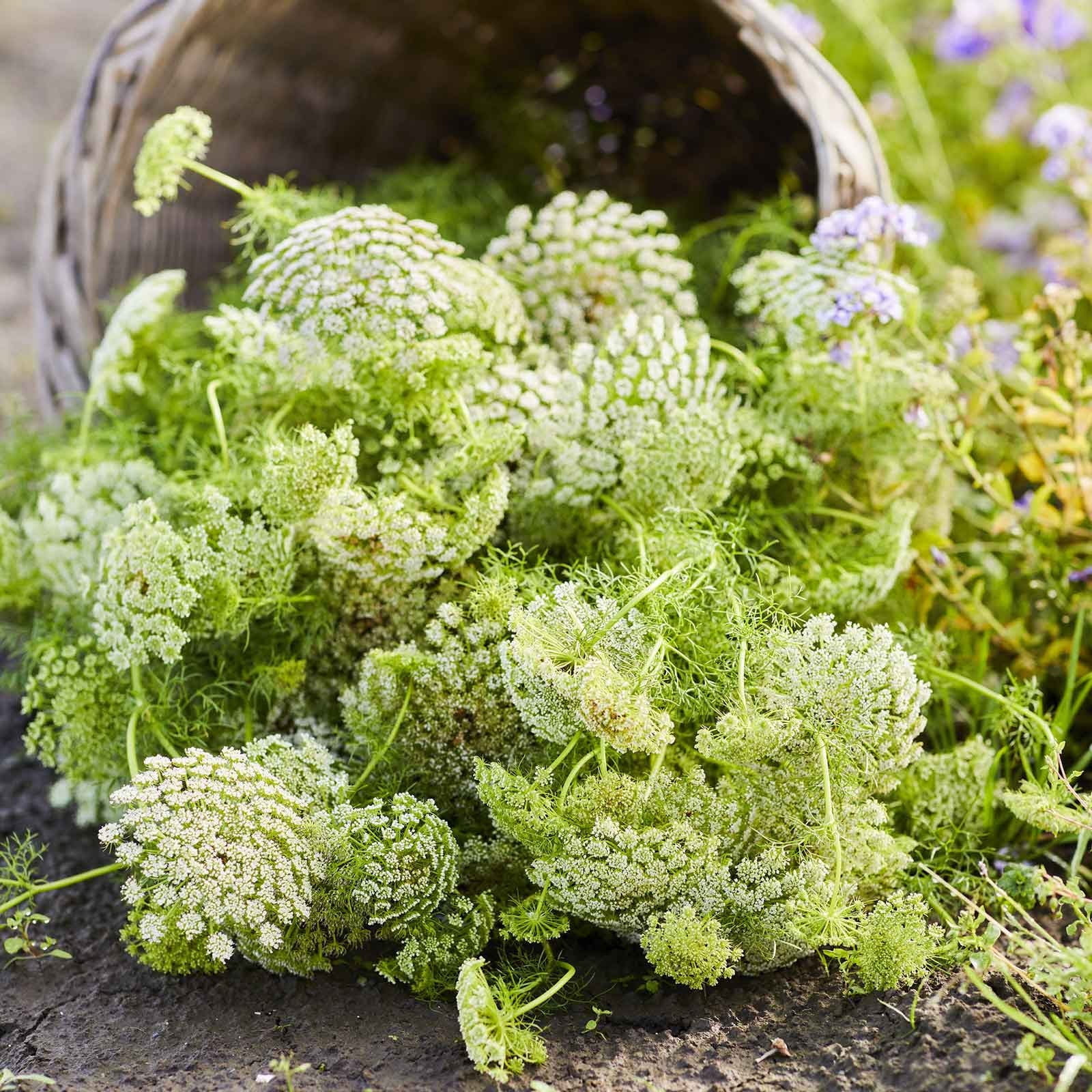
Dharaseeds
Bishop's Flower Seeds
Estimated Free Delivery between April 16 and April 19.
Secured Payment Methods
Your transaction is protected with advanced security measures to keep your information confidential
Bishop's Flower Seeds
Bishop's Flower (Ammi majus), also known as the "Queen Anne's Lace," is a beautiful, delicate plant that offers a profusion of feathery white blooms and lacy foliage. Often grown for its ornamental appeal and ability to attract pollinators, this elegant flower is a wonderful addition to any garden. Growing Bishop’s Flower from seed is a rewarding experience, allowing you to cultivate its graceful, airy beauty in your own backyard.
Key Features of Bishop's Flower Seeds
Delicate, Lace-Like Flowers
Bishop's Flower is renowned for its clusters of tiny white flowers, which create a lace-like effect that adds a soft, ethereal look to any garden. The flowers form delicate umbels that resemble those of Queen Anne's Lace, giving the plant its charming, airy appearance.
Feathery, Fern-Like Foliage
The plant's finely divided, fern-like leaves add a unique texture to the garden. Their soft, delicate appearance complements the flowers, creating a graceful and elegant contrast.
Tall, Elegant Growth
Bishop's Flower typically grows to a height of 2 to 3 feet, making it ideal for filling mid-to-back portions of borders, meadows, or wildflower gardens. The tall, slender stems are topped with large, showy flower clusters that gently sway in the breeze.
Attractive to Pollinators
The small, fragrant flowers of the Bishop’s Flower are highly attractive to bees, butterflies, and other pollinators, making it an excellent choice for pollinator gardens or natural ecosystems.
Benefits of Bishop's Flower Seeds
Easy to Grow
Bishop's Flower is known for being relatively easy to grow from seed. It is a hardy annual that thrives in a variety of growing conditions, making it ideal for novice gardeners. With minimal care, you can enjoy its beautiful blooms season after season.
Self-Seeding
This plant has a tendency to self-seed, meaning it can naturally regenerate in the garden, providing a continual supply of flowers for future years. Once established, Bishop's Flower may return on its own without the need for replanting.
Drought Tolerant
Bishop’s Flower is relatively drought-tolerant once established, making it a good choice for dry, low-maintenance gardens or xeriscaping. It can survive with little water after its roots have developed, making it a sustainable option for water-conscious gardeners.
Pollinator-Friendly
This plant is a magnet for bees, butterflies, and other beneficial insects, making it an essential addition to any garden aimed at supporting local pollinator populations.
How to Plant and Care for Bishop's Flower Seeds
Starting Seeds
Sow Bishop's Flower seeds directly into the garden bed or in seed trays for later transplanting. If planting outdoors, wait until the last frost has passed and the soil has warmed up. For indoor seed starting, sow seeds 6-8 weeks before the last frost. Plant the seeds ¼ inch deep in well-draining soil and keep them moist. Germination usually takes 1-2 weeks under the right conditions.
Transplanting Seedlings
Once seedlings have developed a few sets of leaves and are large enough to handle, transplant them into their final growing location. Space plants about 12 inches apart to allow for proper air circulation and growth. Bishop’s Flower does best in full sun or partial shade, so choose a planting site that receives adequate light.
Watering
Bishop's Flower prefers consistently moist, well-draining soil during the growing season, but it is fairly drought-tolerant once established. Water regularly, but ensure that the soil doesn’t become waterlogged, as this can lead to root rot.
Lighting
Plant Bishop's Flower in full sun to partial shade. It thrives in sunny spots but can tolerate some light shade, especially in warmer climates where it benefits from some afternoon protection.
Temperature and Soil Requirements
Bishop's Flower prefers moderate temperatures and well-draining soil. The ideal soil is slightly sandy or loamy with a neutral to slightly acidic pH. It tolerates a variety of soil types but grows best in fertile, loose soil that allows good root development.
Fertilizing
Feed your Bishop's Flower occasionally with a balanced fertilizer if the soil is poor in nutrients. However, it generally does well in average soil without needing excessive fertilization. Over-fertilizing can result in excessive foliage growth at the expense of flowers.
Harvesting and Propagating Bishop's Flower
Seed Saving
Bishop’s Flower naturally produces seeds once the flowers have matured and dried. Allow the seed heads to dry on the plant, and then carefully collect the seeds. Store them in a cool, dry place until you’re ready to plant them in the next season. The self-seeding habit of Bishop’s Flower means that, once established, it will often reseed itself in the garden.
Division and Transplanting
Bishop’s Flower can be propagated by division, though it is most commonly grown from seed. If you have a mature plant, you can divide the roots in early spring and transplant them to new locations to grow additional plants.
Perfect For:
- Pollinator Gardens: A must-have for any garden aimed at attracting bees, butterflies, and other pollinators.
- Wildflower Meadows: Ideal for creating natural-looking meadows or prairie-style gardens that support biodiversity.
- Borders and Edging: A great addition to flower borders or garden edges where its tall, airy flowers will create visual interest.
- Dry Gardens: Works well in drought-tolerant or xeriscape gardens due to its low water requirements once established.
Why Choose Bishop's Flower Seeds?
Bishop's Flower Seeds allow you to grow this lovely, easy-to-care-for plant that enhances any garden with its delicate blooms and attractive foliage. With its airiness and light, feathery texture, it brings a soft elegance to your landscape. Perfect for pollinator gardens, wildflower meadows, or adding height to flower borders, Bishop's Flower is an excellent choice for gardeners of all skill levels. Grow this beautiful, self-seeding plant and enjoy its graceful presence year after year.









